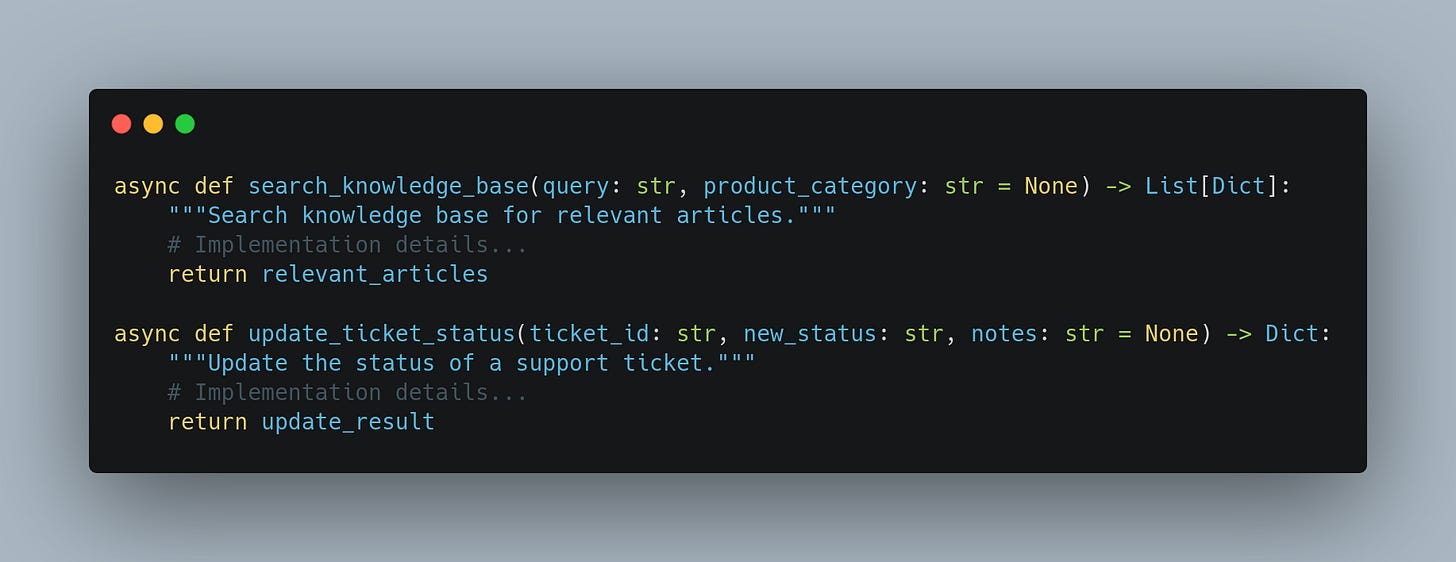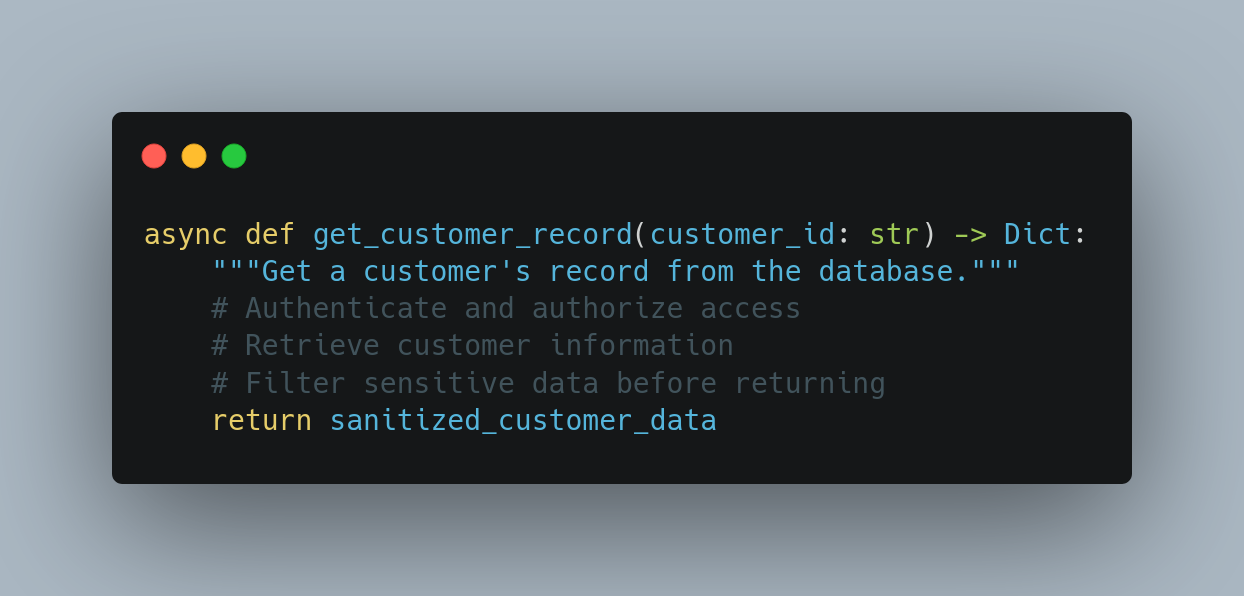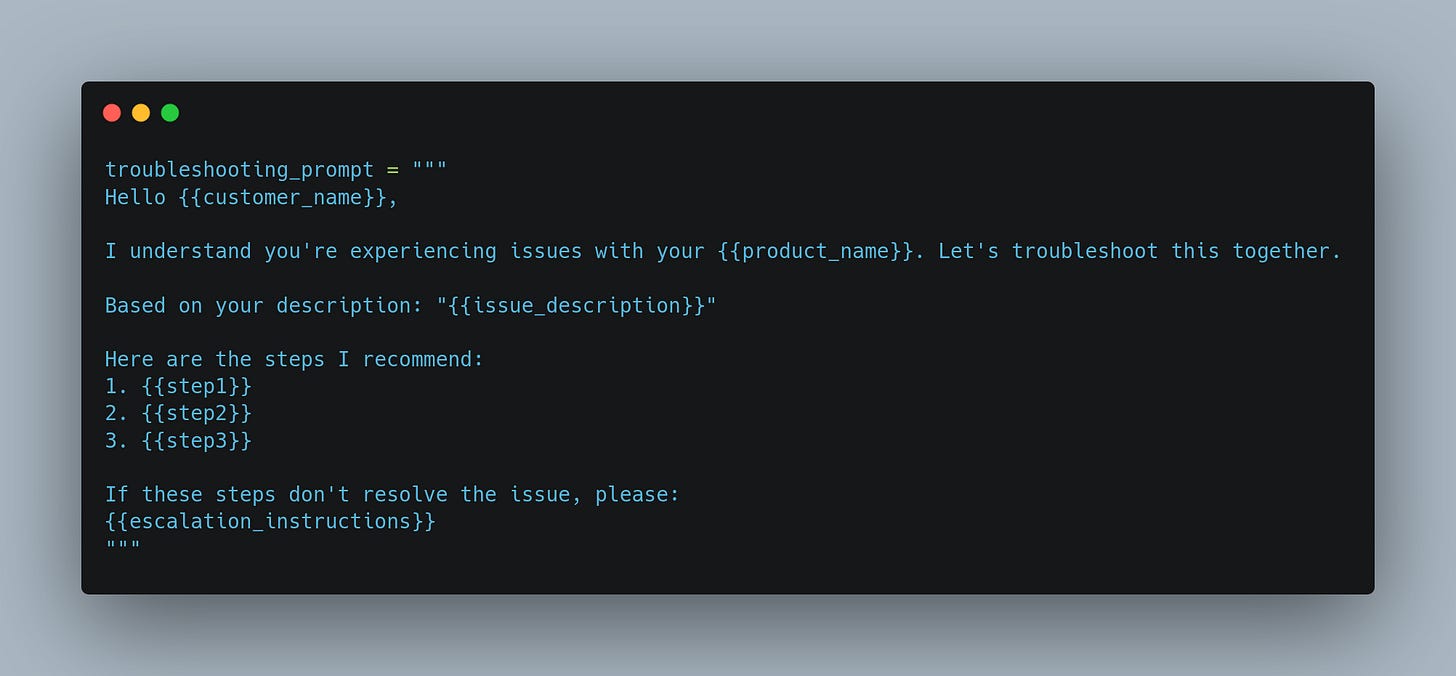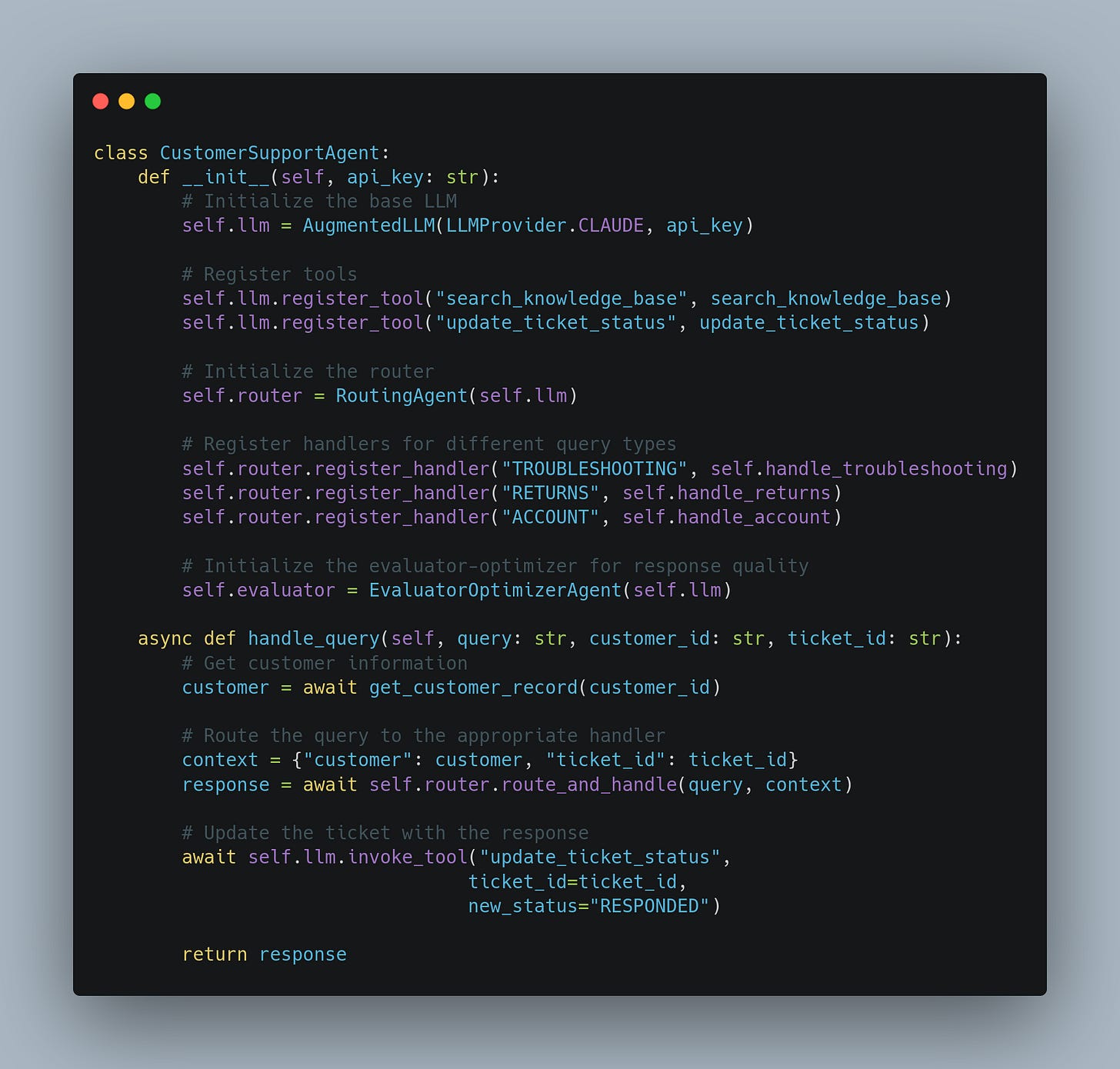Building Intelligent Agents: How to Implement LLM Workflows with the Model Context Protocol
"Unlocking the Future of AI: Seamless Integration and Optimization in Next-Gen Systems"
In the past year, we've witnessed an explosion of applications leveraging Large Language Models (LLMs) like Claude and GPT-4. However, many of these applications follow a simplistic pattern: send a prompt, get a response. While this approach works for basic use cases, it quickly breaks down when building more sophisticated AI applications that need to interact with external systems, process complex inputs, or perform multi-step reasoning.
Today, I want to introduce you to a more structured approach for building intelligent agents with LLMs: the Model Context Protocol (MCP) and agent workflow patterns. These architectural patterns have emerged from working of dozens of teams building production LLM applications, and they provide a foundation for creating more capable, secure, and maintainable AI systems.
The Problem with Simple Prompting
Let's start by understanding why we need more sophisticated architectures for LLM applications. Consider a customer support agent that needs to:
Access customer information from a database
Search for relevant articles in a knowledge base
Update ticket statuses in a support system
Generate personalized responses for different types of queries
Trying to accomplish all of this with a single, large prompt quickly becomes unwieldy. You'd need to inject sensitive customer data into the prompt, define complex instructions for different scenarios, and trust that the model will always interpret your instructions correctly.
This approach creates several problems:
Security risks: Sensitive data is exposed directly to the LLM
Limited control: You have little control over what actions the LLM takes
Poor maintainability: Changes to business logic require rewriting complex prompts
Unreliable execution: The LLM might misinterpret instructions for complex workflows
The Model Context Protocol: A Better Foundation
The Model Context Protocol (MCP) addresses these issues by clearly separating three key components of AI applications:
Tools: Functions that the LLM can call to perform actions in the world
Resources: Data sources that the application can access
Prompts: Templates that structure how users interact with the AI
This separation creates a more secure, maintainable, and governed architecture. Let me explain each component in more detail.
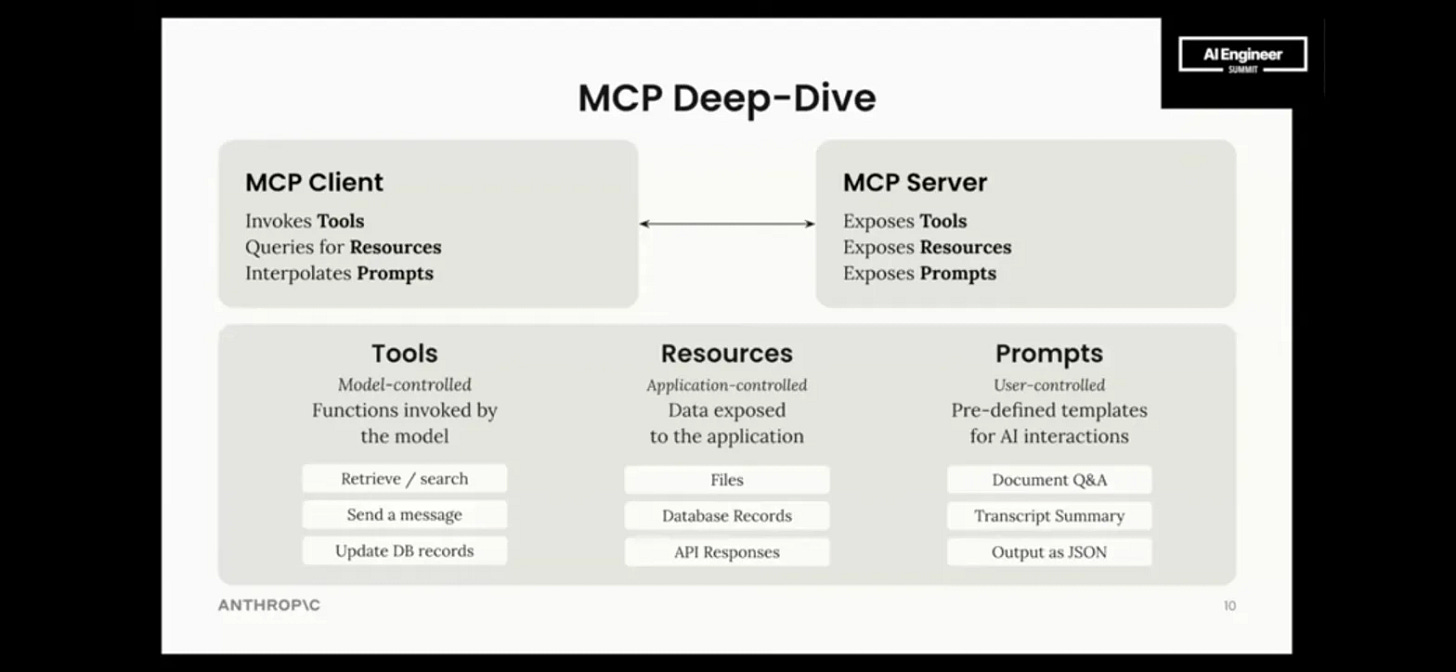
Tools: Model-Controlled Functions
Tools are functions that the LLM can invoke to perform specific actions. They have well-defined inputs and outputs, and they're called based on the model's decisions. For example, a customer support agent might have tools for:
By defining these as explicit tools rather than instructions in a prompt, we gain several advantages:
We can implement proper error handling and validation
We can log tool usage for auditing purposes
We can update tool implementations without changing prompts
The LLM's role is focused on deciding which tools to use rather than how to implement them
Resources: Application-Controlled Data
Resources are data sources that the application controls. They provide secure access to application data with proper authentication and filtering of sensitive information. For example:
Prompts: User-Controlled Templates
Prompts are templates that structure how users interact with the LLM. They include placeholders for dynamic content and ensure consistent AI responses. For example:
By using prompt templates, we:
Ensure consistent tone and formatting
Easily update response formats without changing business logic
Separate content from logic
Agent Workflow Patterns
With MCP as our foundation, we can now implement more sophisticated agent workflow patterns. These patterns represent different ways of orchestrating LLMs to solve complex problems. Let's explore some of the most effective patterns.
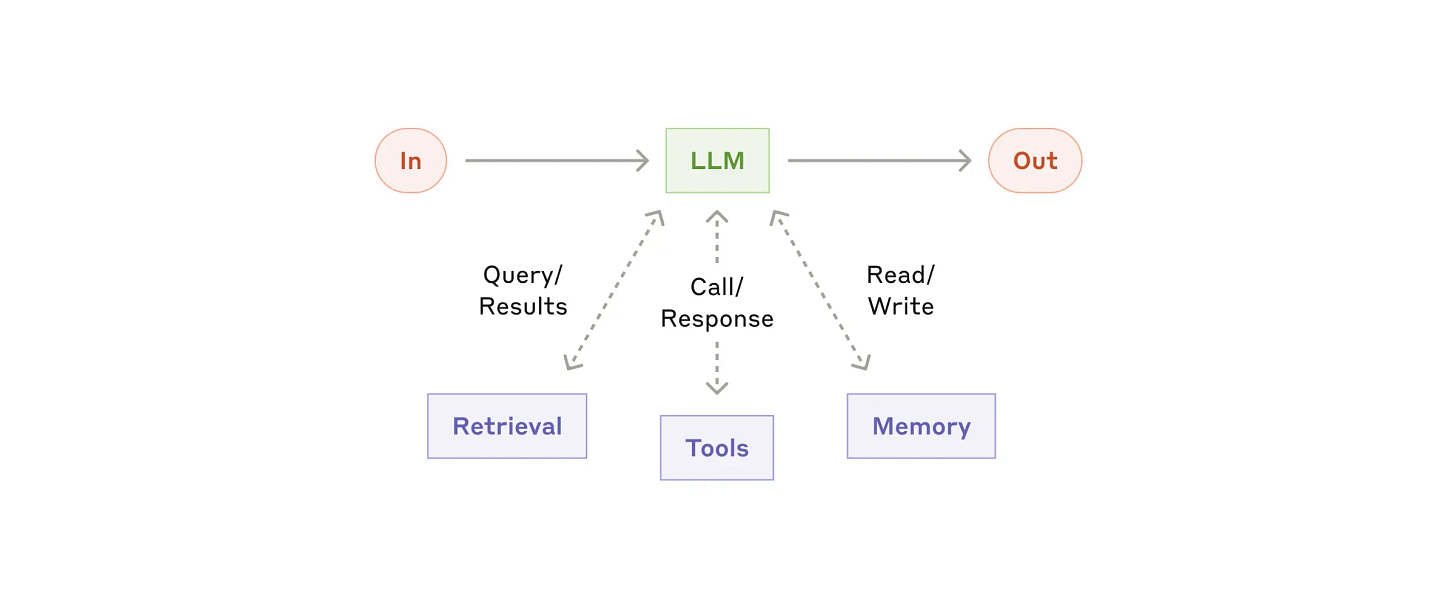
Pattern 1: Prompt Chaining
The Prompt Chaining pattern breaks a complex task into a sequence of simpler subtasks, with each LLM call processing the output of the previous one. This is like an assembly line for thought, where each station adds value to the final product.
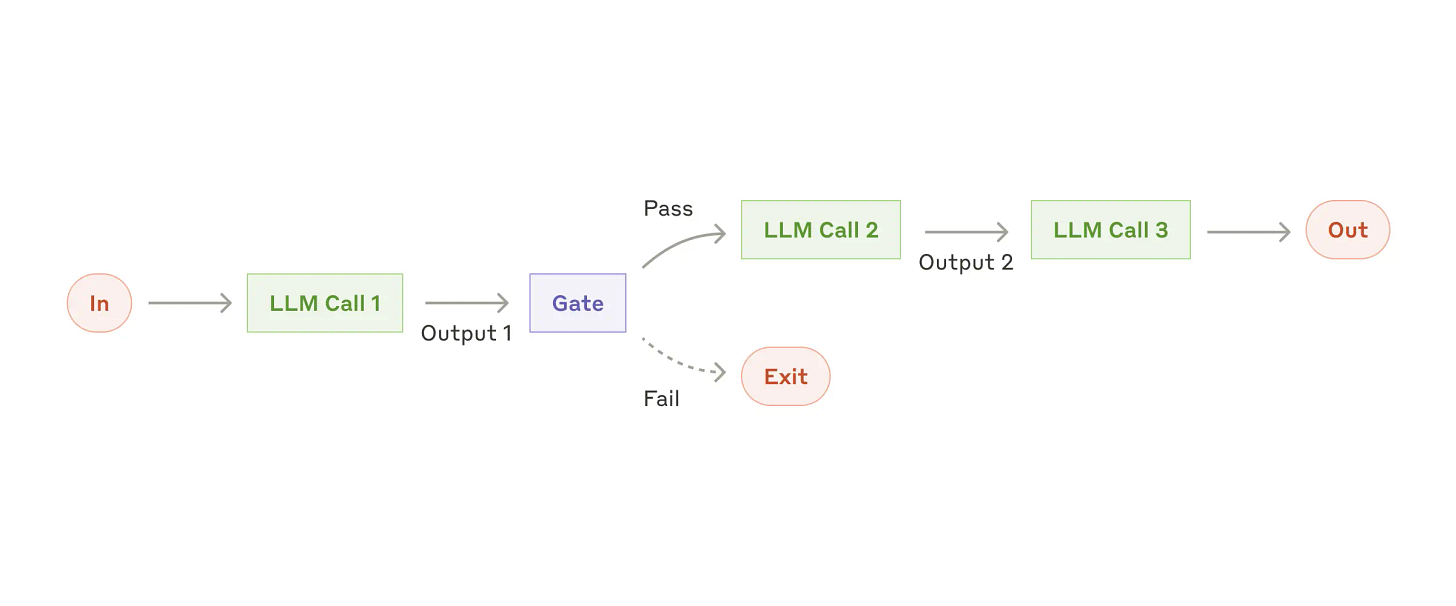
For example, to write a high-quality product description, we might chain:
Research key features and benefits
Create an outline with key selling points
Write an initial draft based on the outline
Refine the draft for clarity and persuasiveness
By breaking the task into sequential steps, we often achieve higher quality results than attempting to generate everything in one go. Each step can focus on a specific aspect of the task, allowing the LLM to dedicate its full attention to that component.
Pattern 2: Routing
The Routing pattern classifies an input and directs it to specialized handlers based on the classification. It's like a receptionist who routes calls to the appropriate department.
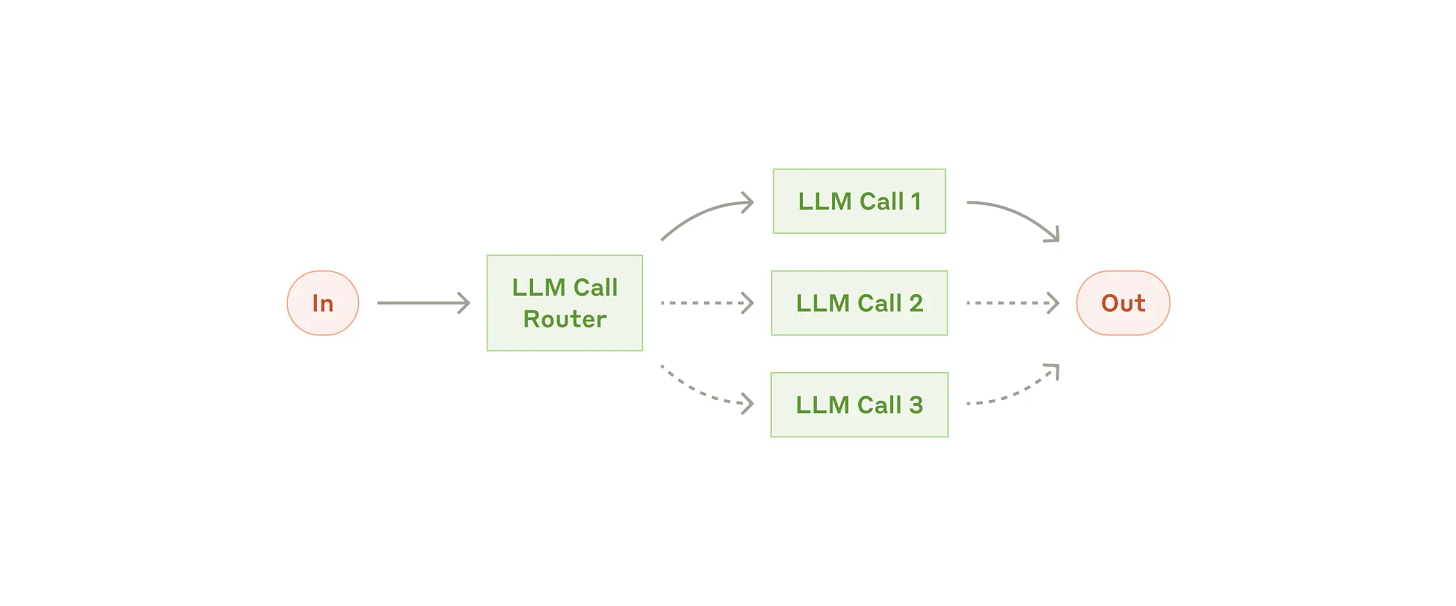
For a customer support system, we might route queries into categories like:
Technical troubleshooting
Account management
Billing questions
Return requests
Each category has a specialized handler optimized for that type of query. This leads to better responses than a one-size-fits-all approach.
Pattern 3: Parallelization
The Parallelization pattern runs multiple LLM calls in parallel and aggregates their results. It has two main variants:
Sectioning: Breaking a task into independent subtasks (like having different experts analyze different aspects of a problem)
Voting: Running the same task multiple times to get consensus (like getting multiple medical opinions)
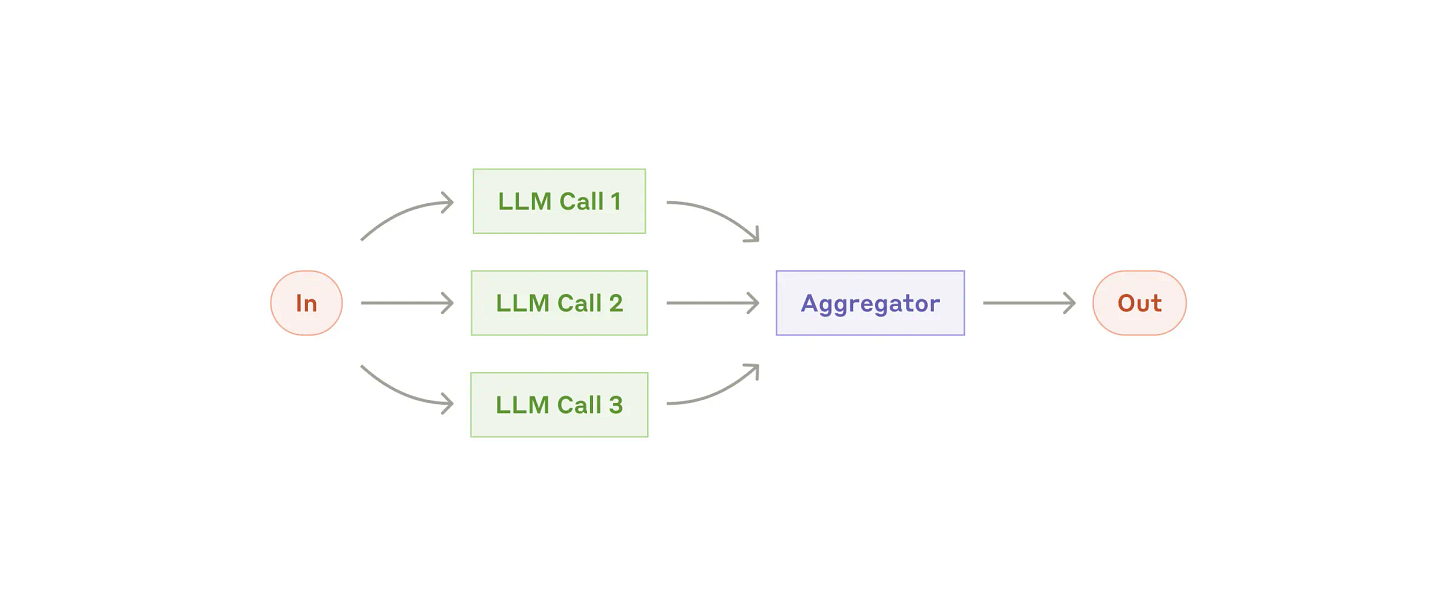
For example, when analyzing a product review, we might simultaneously evaluate sentiment, identify key issues, and extract product suggestions, then combine these insights into a comprehensive analysis.
Pattern 4: Orchestrator-Workers
The Orchestrator-Workers pattern uses a central LLM to dynamically break down tasks, delegate them to worker LLMs, and synthesize their results. It's like a project manager who divides a project into tasks, assigns them to team members, and integrates their work into a cohesive deliverable.
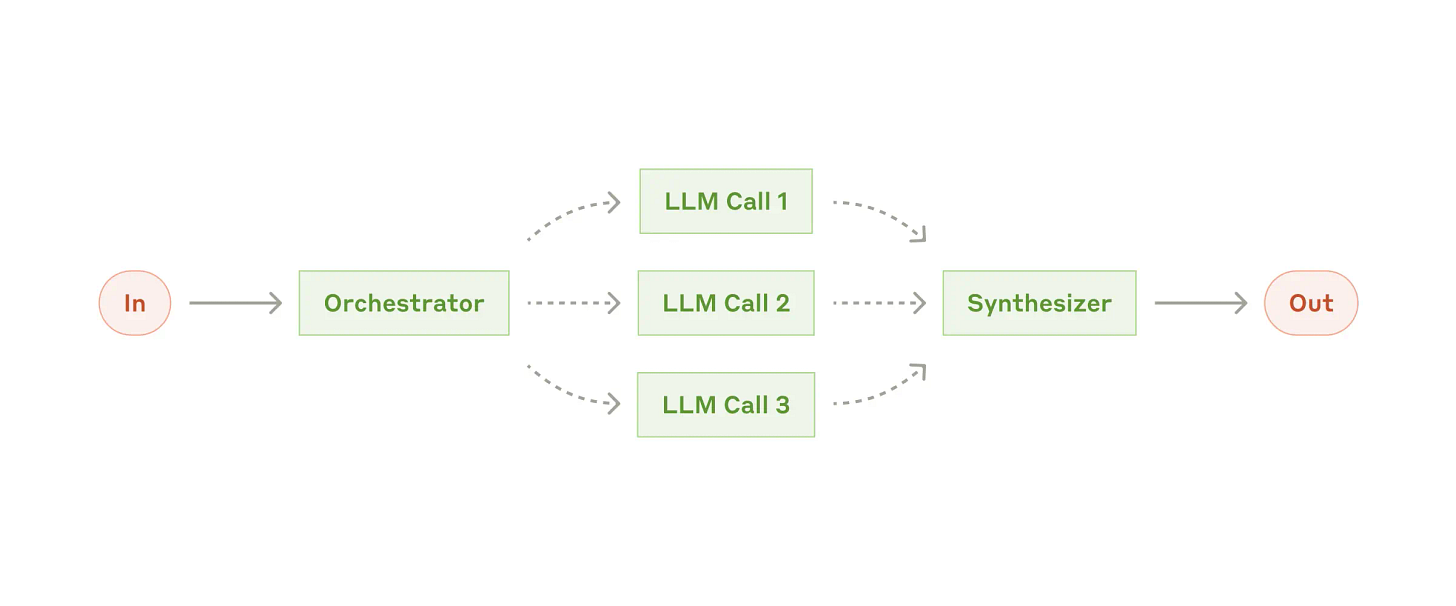
This pattern is particularly effective for complex tasks where the subtasks can't be predetermined. For instance, writing a business plan might require market analysis, financial projections, marketing strategy, and operational planning—all delegated to specialized workers and then synthesized by the orchestrator.
Pattern 5: Evaluator-Optimizer
The Evaluator-Optimizer pattern uses one LLM to generate solutions and another to evaluate and provide feedback in an iterative loop. It's like having a writer and an editor working together to refine a piece of content.
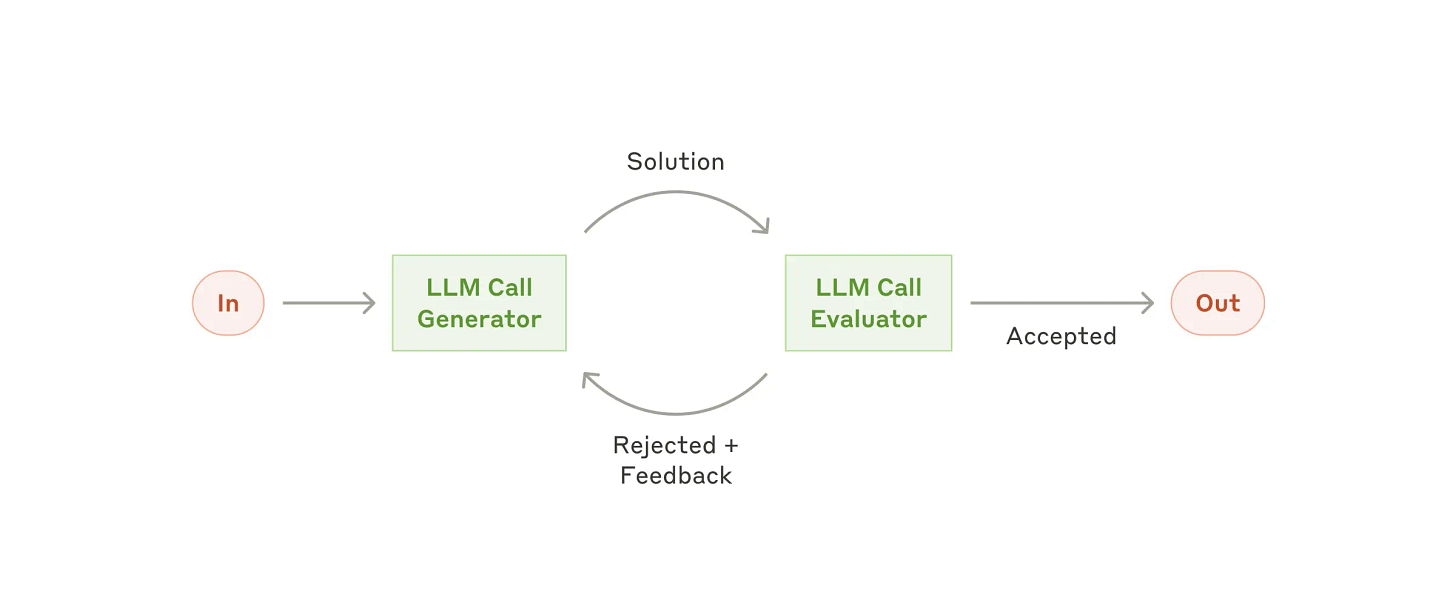
This pattern creates a feedback loop that can significantly improve output quality. For example, to craft a persuasive email:
The optimizer generates an initial draft
The evaluator assesses it against criteria like clarity, persuasiveness, and tone
The optimizer revises based on the feedback
This cycle continues until reaching a quality threshold
Pattern 6: Autonomous Agent
The Autonomous Agent pattern creates a fully self-directed agent that can plan, execute, and reflect on actions to accomplish complex tasks. It's like having an independent contractor who figures out what needs to be done and does it with minimal supervision.
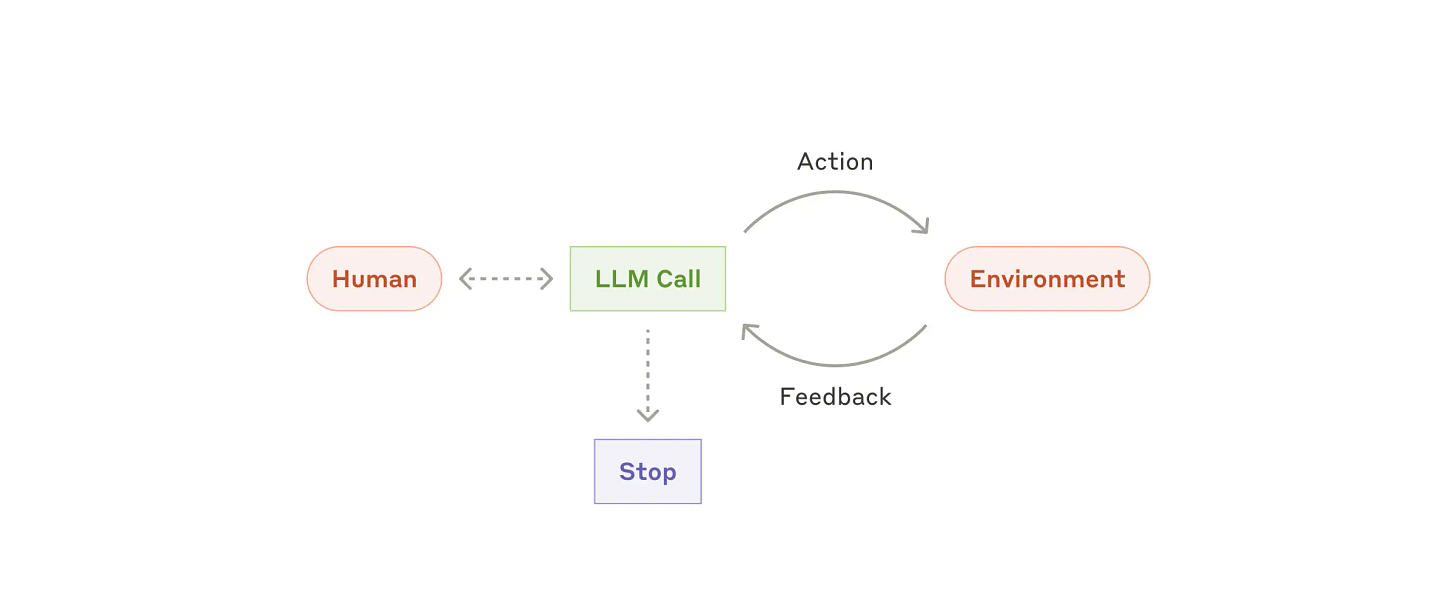
This is the most flexible but also the most complex pattern. The agent typically goes through cycles of:
Analyzing the task and creating a plan
Executing steps in the plan, using tools as needed
Observing the results of its actions
Adapting its plan based on feedback
Continuing execution until the task is complete
This pattern is particularly powerful for open-ended tasks where the solution path isn't clear upfront.
Building a Real-World Application
To illustrate how these patterns work together, let's look at a customer support agent that combines the Routing and Evaluator-Optimizer patterns.
In this example:
We use the MCP architecture to separate tools, resources, and prompts
We employ the Routing pattern to direct queries to specialized handlers
We use the Evaluator-Optimizer pattern (not shown in detail) to ensure high-quality responses
All of this happens within a clean, maintainable structure
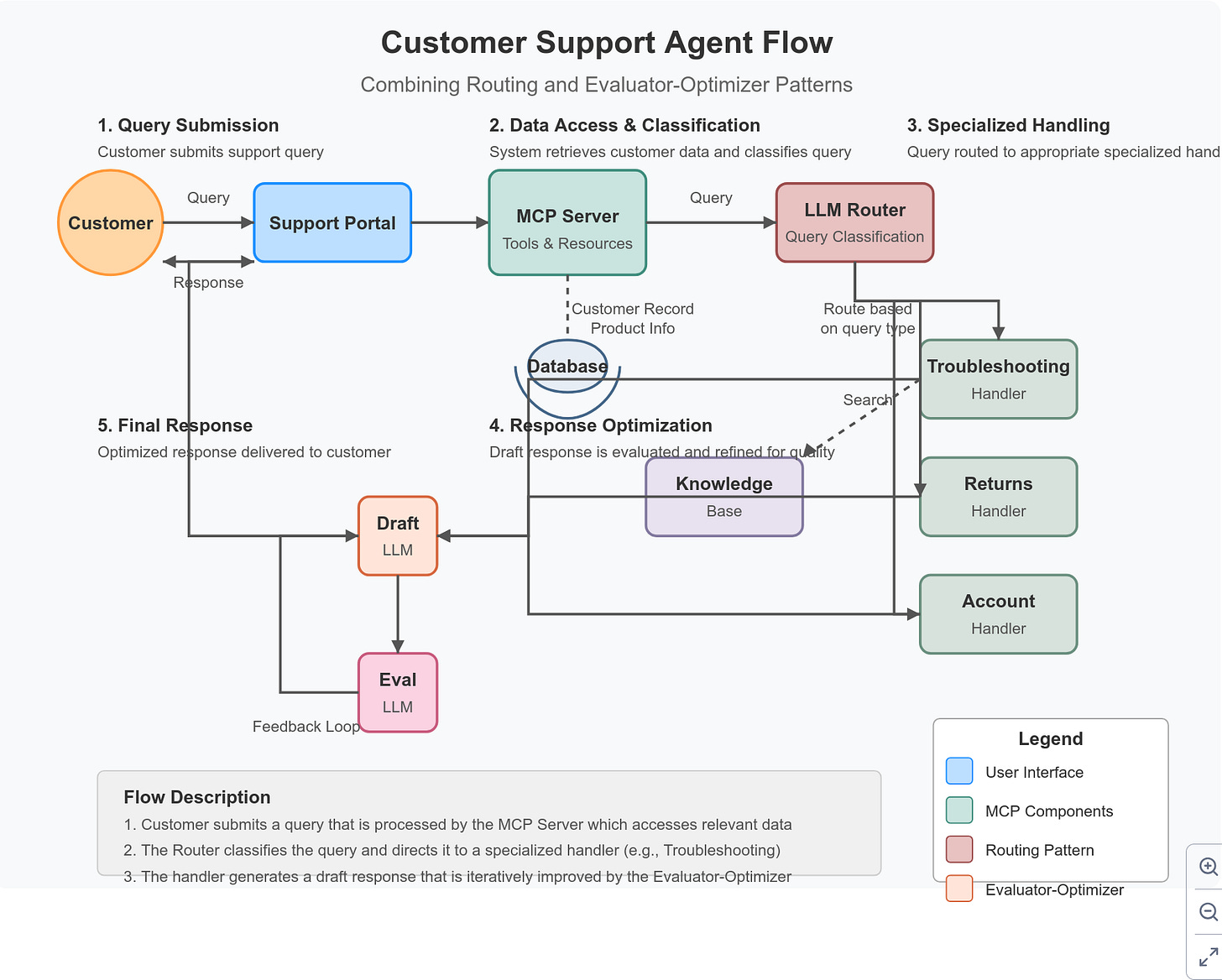
The result is a customer support agent that can:
Classify and route queries to the appropriate handler
Access customer and product information securely
Search for relevant knowledge base articles
Generate high-quality, personalized responses
Update ticket statuses in the support system
And it does all of this with a clean separation of concerns that makes the system secure, maintainable, and governable.
Benefits and Best Practices
Adopting MCP and agent patterns provides several key benefits:
Enhanced Security: Sensitive data remains within application boundaries
Improved Maintainability: Each component can be updated independently
Better Governance: Clear audit trails of model actions
Scalability: New tools and resources can be added without changing other components
Consistency: Standardized formats for user interactions
When implementing these patterns, follow these best practices:
Start Simple: Begin with the simplest pattern that meets your needs
Design Clear Tool Interfaces: Make tools atomic, well-documented, and focused
Implement Proper Resource Security: Apply authentication, authorization, and data filtering
Craft Effective Prompts: Use consistent formats and clear instructions
Monitor Performance: Track costs, latency, and response quality
Iteratively Improve: Refine your implementation based on real-world usage
Conclusion
The Model Context Protocol and agent workflow patterns represent a significant evolution in how we build applications with LLMs. By moving beyond simple prompting to more structured architectures, we can create AI systems that are more capable, secure, and maintainable.
These patterns aren't just theoretical—they're being used today by teams building production LLM applications across industries. From customer support to content creation, from research assistants to coding agents, the combination of MCP and agent patterns provides a foundation for building the next generation of AI applications.
As you embark on your own journey of building with LLMs, I encourage you to adopt these patterns and adapt them to your specific needs. The future of AI isn't just about bigger models or better prompts—it's about thoughtful architectures that leverage these powerful tools in safe, effective, and maintainable ways.
Inspired by groundbreaking research from Anthropic researchers, including the insights shared in "Building Effective Agents" and "Model Context Protocol" publications. Images and conceptual frameworks are credited to the Anthropic research team.
In the rapidly evolving landscape of artificial intelligence, mastering the Model Context Protocol isn't just about writing code—it's about orchestrating intelligent agents that can transform complex challenges into elegant, adaptive solutions, bridging the gap between human creativity and machine intelligence.





